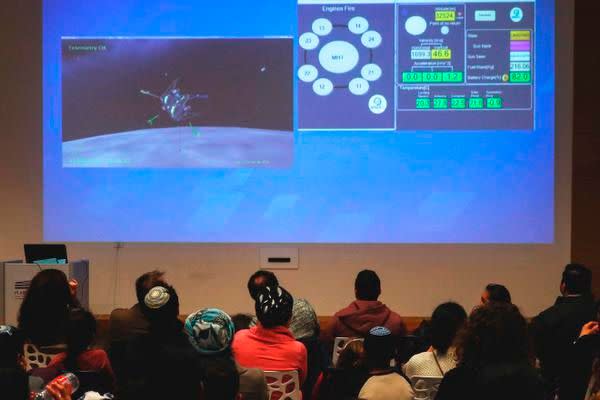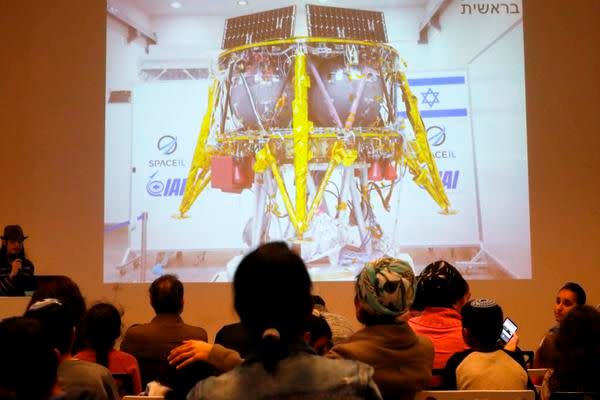Seven weeks after launching from Cape Canaveral, a small Israeli spacecraft failed to land intact on the moon Thursday afternoon.
Doron Opher, general manager of the space division of Israel Aerospace Industries, says the SpaceIL craft “definitely crashed on the surface of the moon.” He said the spacecraft was in pieces scattered at the planned landing site.
The lander named Beresheet (“In the beginning” in Hebrew) was attempting to become the first privately funded mission to land on the moon. The spacecraft lost communication with Earth just moments before it was to touch down, dashing hopes of making history.
Doron said that the spacecraft’s engine turned off shortly before landing. By the time power was restored, he said the craft was moving too fast to land safely. Scientists were still trying to figure out the cause of the failure.
“One of the inertial measurement units failed. And that caused an unfortunate chain of events we’re not sure about,” he said. “The engine was turned off. The engine was stopped and the spacecraft crashed. That’s all we know.”
The failure occurred in front of a packed audience that included Prime Minister Benjamin Netanyahu and was broadcast live on national television.
“If at first you don’t succeed, try, try again,” Netanyahu said. He vowed to put an Israeli spacecraft on the moon “intact” in the next two years.
The small robotic spacecraft, built by the non-profit SpaceIL and state-owned Israel Aerospace Industries, had hoped to match a feat that has been achieved only by the national space agencies of three countries: the U.S., Russia and China.
Scientists who were giddy only seconds earlier were visibly distraught, and celebrations at viewing centers across the country were dashed.
President Reuven Rivlin hosted dozens of youngsters at his official residence. The children, some wearing white spacesuits, appeared confused as the crash unfolded.
“We are full of admiration for the wonderful people who brought the spacecraft to the moon,” Rivlin said. “True, not as we had hoped, but we will succeed in the end.”
The failure was a disappointing ending to a 4 million mile lunar voyage, almost unprecedented in length, that was designed to conserve fuel and reduce price.
The $100 million mission originated as a competitor for the Google Lunar XPrize, which ended without a winner.
The philanthropist-backed venture launched Feb. 21 on a SpaceX Falcon 9 rocket from Cape Canaveral Air Force Station, hitching a ride with an Indonesian communications satellite.
For the past two months, Beresheet traveled around the Earth several times before entering lunar orbit in hopes of joining the exclusive club of countries that have made it to the moon.
The spacecraft sent back images of the moon’s crater-pocked far side with Earth a small, glowing orb in the distance.
SpaceIL reported Beresheet being on a good trajectory heading into a series of “intense maneuvers” to set up the soft-landing attempt, the first on the moon by an Israeli spacecraft or one not funded by a government space agency.
NASA broadcast the landing attempt live on its dedicated TV channels, as well as online.
“While NASA regrets the end of the SpaceIL mission without a successful lunar landing of the Beresheet lander, we congratulate SpaceIL, the Israel Aerospace Industries and the state of Israel on the incredible accomplishment of sending the first privately funded mission into lunar orbit,” said NASA Administrator Jim Bridenstine.
“Every attempt to reach new milestones holds opportunities for us to learn, adjust and progress. I have no doubt that Israel and SpaceIL will continue to explore and I look forward to celebrating their future achievements.”












